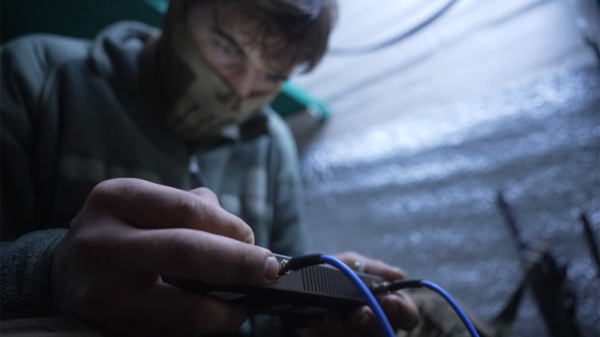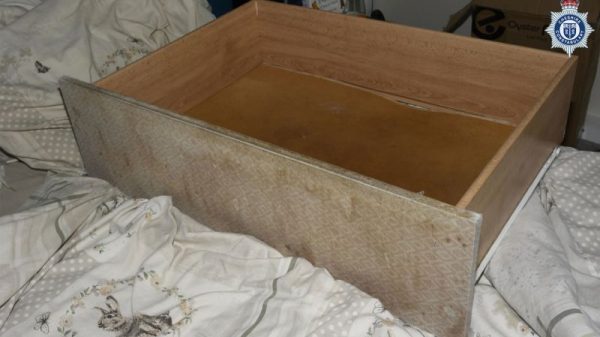Scientists have discovered a previously hidden ecosystem with an expansive system of lagoons in the salt plains of Puna de Atacama, an arid plateau in Argentina — with giant stromatolites that could provide a glimpse into the earliest life on Earth and possibly even on Mars, according to new research.
Stromatolites are layered rocks created by the growth of blue-green algae, or cyanobacteria, through photosynthesis. The structures are considered to be one of the oldest ecosystems on Earth, according to NASA, representing the earliest fossil evidence for life on our planet from at least 3½ billion years ago.
“These are certainly akin to some of the earliest macrofossils on our planet, and in really a rare type of environment on modern Earth,” said Brian Hynek, a professor in the department of geological sciences at the University of Colorado Boulder, who helped document the ecosystem. “They are a window into the distant past as to what life might have looked like 3½ billion years ago on our planet.”
Ancient giant stromatolites used to be widespread in Earth’s Precambrian era, which encompasses the early time span of around 4.6 billion to 541 million years ago, but now they are sparsely distributed around the world. The most well-developed areas are in the Bahamas and the Shark Bay area in Western Australia, according to the nonprofit conservation organization Bush Heritage Australia.
Modern stromatolites are relatively small, Hynek said, whereas ancient stromatolites used to grow to 20 feet (6 meters) tall and 16 to 22 feet (5 to 7 meters) wide, he said. Beneath the waters of Puna de Atacama’s lagoons, the recently uncovered stromatolites are up to 15 feet (4.5 meters) wide and several feet high, according to a news release from the University of Colorado Boulder.
Stromatolites also tend to grow in alkaline conditions, but the Puna de Atacama’s system of lagoons are acidic. The stromatolites found today are almost all carbonate rocks (made of limestone), but these structures are mostly composed of the minerals gypsum and halite (rock salt), Hynek said.
It is unclear why the stromatolites are so large, Hynek said, but he speculated that the inland ecosystem sat undisturbed for a long period of time, which allowed them to grow unimpeded.
More on ancient stromatolites
Unlike modern stromatolites, ancient stromatolites grew in a period when the atmosphere lacked oxygen. In these conditions, the stromatolites’ microbes used anoxygenic photosynthesis, which doesn’t require oxygen, to convert light energy into compounds that support living cells.
“It is spectacular to find structures that could be biogenic (produced by living organisms) at this unusual altitude,” said Pieter Visscher, a professor of marine sciences at the University of Connecticut who has extensively studied stromatolites, in an email. “A major issue with the discovery, whether biogenic or not, is that these are formed in the presence of oxygen (in the current atmosphere). Until 2.3 billion years ago, there was no oxygen.”
While the stromatolites are in an environment containing oxygen, Hynek said he believes the layers farther down in the rock have little to no access to oxygen and are actively formed by microbes using anoxygenic photosynthesis. This would make the structures similar to the ones found on ancient Earth.
Hynek spotted the system of lagoons through satellite imagery in April 2022 when he was studying another lagoon in northwestern Argentina that had smaller stromatolites with microbes that use anoxygenic photosynthesis.
“We’re not sure if the microbes are actively participating in their growth (in the newly discovered stromatolites). We think they are. But we haven’t done the experiments yet to try to figure that part out,” said Hynek, who documented preliminary observations with microbiologist Maria Farías, cofounder of Punabio SA Environmental Consulting. “There’s a lot of work to be done. We just discovered them and hardly scratched the surface.”
Hynek and Farías were slated to present their findings December 11 at the 2023 meeting of the Geophysical Union in San Francisco, according to a news release.
Possible window into ancient Mars
If the stromatolites are produced by microbes using anoxygenic photosynthesis, the discovery could provide insight on the possibility of life on ancient Mars, Hynek said.
“We’ve identified more than 600 ancient lakes on Mars; there may have even been an ocean. So, it was a lot more Earth-like early on,” he said. Hynek also said the minerals gypsum and halite, found in the stromatolites in Argentina, are also in salt deposits all over Mars.
“If Mars ever evolved life through photosynthesis, this is the type of thing we’d be looking for (stromatolites) — and it is the type of thing we’re looking for,” said Hynek, who is also a research associate at the University of Colorado Boulder’s Laboratory for Atmospheric and Space Physics.
“If we’re going to find any sort of fossils on Mars, this is our best guess as to what they would be, because these are the oldest ones from the Earth rock record.”
Hynek said he hopes to return to the lagoon soon to conduct more research on the stromatolites.
“Stromatolites on Mars? A long shot, but who knows. So far, no carbonates at the surface of Mars, but the search continues,” Visscher said, for potential signs of life.







































